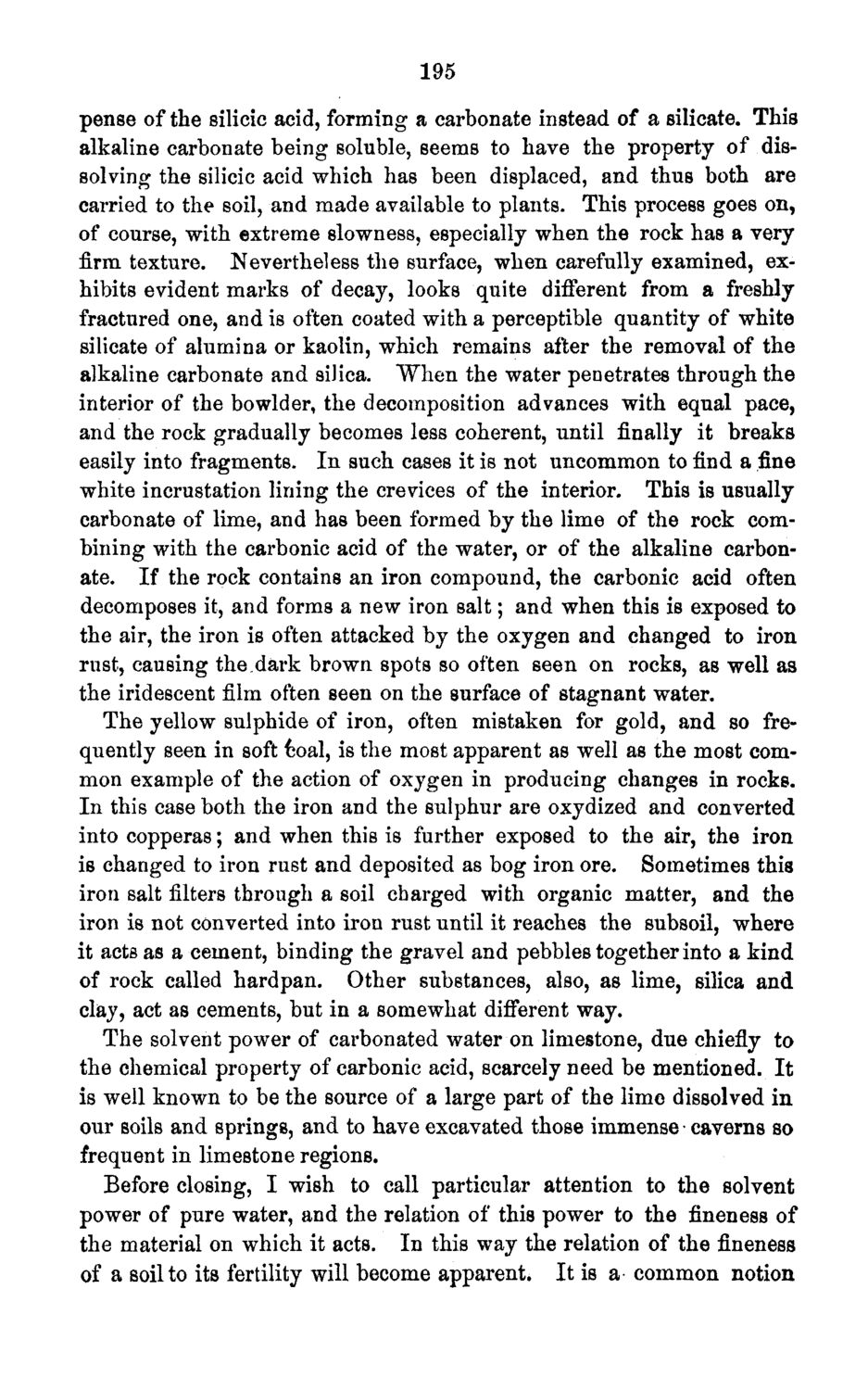| |
| |
Caption: Board of Trustees Minutes - 1871
This is a reduced-resolution page image for fast online browsing.

EXTRACTED TEXT FROM PAGE:
195 pense of the silicic acid, forming a carbonate instead of a silicate. This alkaline carbonate being soluble, seems to have the property of dissolving the silicic acid which has been displaced, and thus both are carried to the soil, and made available to plants. This process goes on, of course, with extreme slowness, especially when the rock has a very firm texture. Nevertheless the surface, when carefully examined, exhibits evident marks of decay, looks quite different from a freshly fractured one, and is often coated with a perceptible quantity of white silicate of alumina or kaolin, which remains after the removal of the alkaline carbonate and silica. "When the water penetrates through the interior of the bowlder, the decomposition advances with equal pace, and the rock gradually becomes less coherent, until finally it breaks easily into fragments. In such cases it is not uncommon to find a fine white incrustation lining the crevices of the interior. This is usually carbonate of lime, and has been formed by the lime of the rock combining with the carbonic acid of the water, or of the alkaline carbonate. If the rock contains an iron compound, the carbonic acid often decomposes it, and forms a new iron salt; and when this is exposed to the air, the iron is often attacked by the oxygen and changed to iron rust, causing the.dark brown spots so often seen on rocks, as well as the iridescent film often seen on the surface of stagnant water. The yellow sulphide of iron, often mistaken for gold, and so frequently seen in soft feoal, is the most apparent as well as the most common example of the action of oxygen in producing changes in rocks. In this case both the iron and the sulphur are oxydized and converted into copperas; and when this is further exposed to the air, the iron is changed to iron rust and deposited as bog iron ore. Sometimes this iron salt filters through a soil charged with organic matter, and the iron is not converted into iron rust until it reaches the subsoil, where it acts as a cement, binding the gravel and pebbles together into a kind of rock called hardpan. Other substances, also, as lime, silica and clay, act as cements, but in a somewhat different way. The solvent power of carbonated water on limestone, due chiefly to the chemical property of carbonic acid, scarcely need be mentioned. It is well known to be the source of a large part of the lime dissolved in our soils and springs, and to have excavated those immense caverns so frequent in limestone regions. Before closing, I wish to call particular attention to the solvent power of pure water, and the relation of this power to the fineness of the material on which it acts. In this way the relation of the fineness of a soil to its fertility will become apparent. It is a common notion
| |